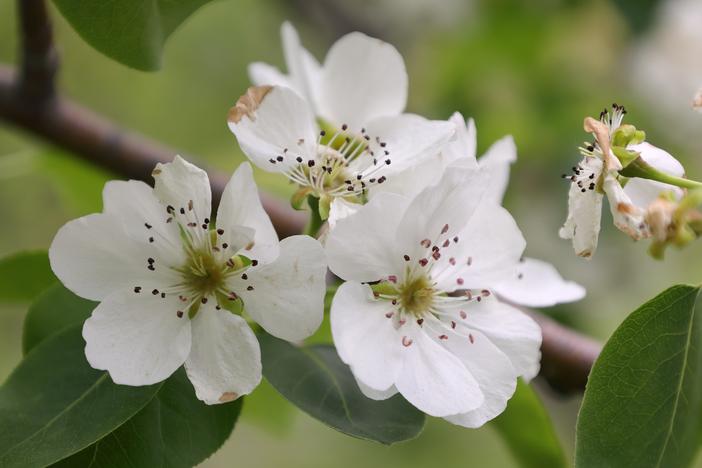Manchurian Pear
(Pyrus ussuriensis)
Manchurian Pear (Pyrus ussuriensis)
/
/

Cephas
CC BY-SA 4.0






























Estimated Native Range
Summary
The Manchurian Pear is valued for its ornamental qualities, including its beautiful spring blossoms and its ability to withstand cold temperatures, making it the hardiest of all pear trees. It is used in urban landscaping, as a street tree, and in parks for its aesthetic appeal and its resilience to urban conditions. The tree requires full sun for optimal growth and prefers well-drained loam soils, although it can tolerate a range of soil types. It is relatively low-maintenance once established but can be susceptible to fire blight, a bacterial disease that can damage flowers, shoots, and branches. Gardeners should be aware of the potential for this disease and select resistant cultivars if possible. Additionally, the tree can suffer from freeze damage in milder climates if a late frost occurs after budding.CC BY-SA 4.0
Plant Description
- Plant Type: Tree
- Height: 40-50 feet
- Width: 10-15 feet
- Growth Rate: Moderate
- Flower Color: White
- Flowering Season: Spring
- Leaf Retention: Deciduous
Growth Requirements
- Sun: Full Sun, Part Shade
- Water: Medium
- Drainage: Medium
Common Uses
Bee Garden, Bird Garden, Butterfly Garden, Drought Tolerant, Edible*Disclaimer: Easyscape's listed plant edibility is for informational use. Always verify the safety and proper identification of any plant before consumption., Fragrant, Showy Flowers, Street Planting
Natural Habitat
native to the temperate regions of East Asia, including northeastern China, Korea, Japan, and the Ussuri River area of Russia
Other Names
Common Names: Harbin Pear, Chinnese Pear, Amur Pear, Ussurian Pear, Ussuri-Birne, Manchuriskt Päron, Sandolbae, Qiu Zi Li, 산돌배, 산돌배나무
Scientific Names: , Pyrus ussuriensis, Pyrus ussuriensis var. hondoensis, Pyrus hondoensis, Pyrus hakunensis, Pyrus lindleyi, Pyrus ussuriensis var. seoulensis, Pyrus sogdiana, Pyrus ussuriensis var. ovoidea, Pyrus ussuriensis var. nankaiensis
GBIF Accepted Name: Pyrus ussuriensis Maxim.